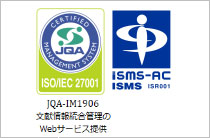ホームIMICライブラリMMWR抄訳2016年(Vol.65)10年生の学生におけるマリファナの使用 ― ワシン・・・
2016/12/30Vol. 65 / Nos. 50 & 51
MMWR65(50 & 51):1421-1424
Marijuana Use Among 10th Grade Students — Washington, 2014
10年生の学生におけるマリファナの使用 ― ワシントン州、2014年
2012年以降、ワシントンDC、アラスカ州、カリフォルニア州、コロラド州、メイン州、マサチューセッツ州、ネバダ州、オレゴン州およびワシントン州では娯楽用または小売マリファナの購入が21歳以上を対象に合法となり、若者のマリファナ使用問題が増加している。ワシントン州では2012年の選挙で可決となり、2014年7月に初めてマリファナの小売が許可されている。今回、Washington State Department of Healthにより、2014 Healthy Youth Surveyデータが分析され、ワシントン州の10年生におけるマリファナ使用が調査された。分析対象は192校(回答率:87%)、8,821名(同:66%)の10年生であり、うち8,579名がマリファナに関する質問に回答した。調査前30日以内にマリファナを使用したと回答した生徒は1,556名(18.1%)であり、2002~2014年と有意な変化は認めなかった。人種別では非ヒスパニック系アメリカインディアン/アラスカ先住民(33.5%)、非ヒスパニック系黒人(26.4%)、ヒスパニック系(23.4%)にて高く、非ヒスパニック系白人(17.2%)、非ヒスパニック系アジア人(7.7%)にて低かった。また、学校の成績の低い生徒(評価C/D)にて32.3%と成績の良い生徒(評価A/B):13.1%に比べ高かった。使用頻度は30日間のうち1~2日が37%(男子:33.6%、女子:40.4%)、10日以上は32%(男子:38.4%、女子:26.2%)であり、入手方法は仲間から(65%)またはお金を誰かに渡して買う(18%)、店で買う(6%)、親の許可なく家で入手(11%)などであった。また、マリファナを使用する学生は使用しない学生に比べ喫煙率が高く(30.6% vs 2.8%)、飲酒(64.3% vs 10.9%)、電子タバコの使用率(61.7% vs 8.3%)も高かった。
References
- Zalesky A, Solowij N, Yücel M, et al. Effect of long-term cannabis use on axonal fibre connectivity. Brain 2012;135:2245–55. <http://dx.doi.org/10.1093/brain/aws136>
- Meier MH, Caspi A, Ambler A, et al. Persistent cannabis users show neuropsychological decline from childhood to midlife. Proc Natl Acad Sci U S A 2012;109:E2657–64. <http://dx.doi.org/10.1073/pnas.1206820109>
- Washington State Department of Social and Health Services, Department of Health, Office of the Superintendent of Public Instruction, and Liquor and Cannabis Board. Healthy Youth Survey 2014 analytic report. Olympia, WA; 2016. <http://www.askhys.net/Docs/HYS%202014%20Analytic%20Report%20FINAL%204-5-2016.pdf>
- Kann L, Kinchen S, Shanklin SL, et al. Youth risk behavior surveillance— United States, 2013. MMWR Suppl 2014;63(No. SS-4):1–168. <https://www.cdc.gov/mmwr/pdf/ss/ss6304.pdf.>
- Johnston LD, O’Malley PM, Miech RA, Bachman JG, Schulenberg JE. Monitoring the future national survey results on drug use: 1975–2014: overview, key findings on adolescent drug use. Ann Arbor, MI: Institute for Social Research, University of Michigan; 2015. <http://www.monitoringthefuture.org/pubs/monographs/mtf-overview2014.pdf>
- Volkow ND, Baler RD, Compton WM, Weiss SR. Adverse health effects of marijuana use. N Engl J Med 2014;370:2219–27. <http://dx.doi.org/10.1056/NEJMra1402309>
- Harrison PA, Fulkerson JA, Park E. The relative importance of social versus commercial sources in youth access to tobacco, alcohol, and other drugs. Prev Med 2000;31:39–48. <http://dx.doi.org/10.1006/pmed.2000.0691>
- Arrazola RA, Singh T, Corey CG, et al. Tobacco use among middle and high school students—United States, 2011–2014. MMWR Morb Mortal Wkly Rep 2015;64:381–5.
- Raphael B, Wooding S, Stevens G, Connor J. Comorbidity: cannabis and complexity. J Psychiatr Pract 2005;11:161–76. <http://dx.doi.org/10.1097/00131746-200505000-00004>
- American Psychological Association. Regular marijuana use bad for teens’ brains, study finds. Rockville, MD: ScienceDaily; 2014. <https://www.sciencedaily.com/releases/2014/08/140809141436.htm>
- Raphael B, Wooding S, Stevens G, Connor J. Comorbidity: cannabis and complexity. J Psychiatr Pract 2005;11:161–76. <http://dx.doi.org/10.1097/00131746-200505000-00004>
Copyright © 2013 International Medical Information Center. All Rights Reserved.












